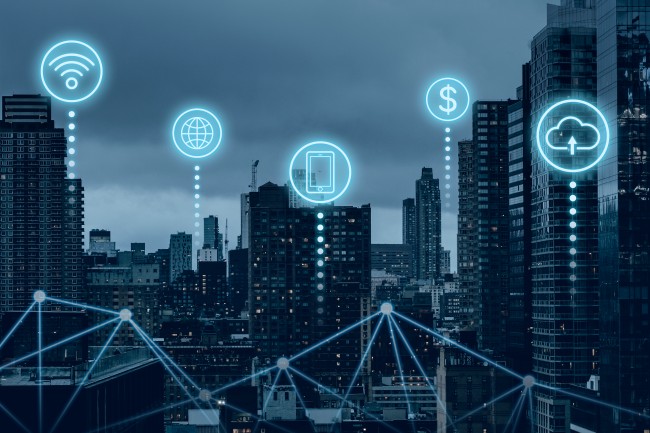
In 2021 alone, over USD 105 billion was invested in critical infrastructure protection in cybersecurity alone and is expected to reach USD 154 billion by 2027. Despite the two-decade experience and the increase in spending in the US and other countries across the globe, we still don’t seem to have gotten critical infrastructure protection right.
We need to start rethinking infrastructure security models and work towards building cyber resilience by design.
Case in point – the Colonel Pipeline ransomware attack that took down its entire network, halting its pipeline operations and impacting gas supply to the entire East Coast of the US.
Let’s delve deeper into critical infrastructure protection in cybersecurity and why Critical Infrastructure is so important.
What is Critical Infrastructure?
Critical infrastructure refers to the physical and digital systems and assets critical to a country. Their destruction or incapacitation has a debilitating impact on the national and economic security and/or public health and safety of that country.
Critical infrastructure provides essential services that underpin a nation and its people. From a cybersecurity perspective, critical infrastructure includes all systems, computers, devices, networks, and digital assets that control essential services like
- Telecom
- Food and agriculture
- Financial services
- Healthcare
- Power
- Critical manufacturing
- Emergency services
It also includes systems and devices, such as climate systems, sensors, IoT devices, etc., that help monitor, control, and manage this infrastructure.
What is Critical Infrastructure Protection?
Critical infrastructure protection (CIP) came into being as a concept in 1998. The then US President, Bill Clinton, issued a presidential directive that outlined steps to protect key areas of national infrastructure deemed critical to the national and economic security of the United States. This led to a massive increase in spending towards not just protecting physical infrastructure but also cybersecurity.
CIP protection is securing the infrastructure of critical industries such as food and agriculture, transportation, power, and so on. The objective is to ensure that a nation’s critical infrastructure is protected against terrorist threats, natural disasters, and the ever-growing number of cyber threats. Also, it enables being well-prepared to respond to and recover in case a serious incident occurs.
Critical infrastructure protection, also known as infrastructure security, requires public-private partnerships that prioritize resilience, response, and recovery to anticipate and mitigate disaster across the critical infrastructure environment.
It ensures the continued availability of essential services to the government, the public, and the economy. Several countries across the globe have made it mandatory for owners and operators of critical infrastructure to develop and implement industry-specific risk management programs, building on the defined regulatory frameworks.
Typically, the critical infrastructure components that require ongoing security include:
- Industrial Control Systems (ICS)
- Operation Technology (OT)
- SCADA (Supervisory Control and Data Acquisition) systems and networks
Sectors that Require CIP Protection
In the US, 16 sectors are identified officially as critical infrastructure sectors, with election systems being recently designated as a 17th critical infrastructure sector by the Department of Homeland Security.
The 16 sectors are:
- Chemical
- Commercial Facilities
- Communications
- Critical Manufacturing
- Dams
- Defense Industrial Base
- Emergency Services
- Energy
- Financial Services
- Food and Agriculture
- Government Facilities
- Healthcare and Public Health
- Information Technology
- Nuclear Reactors, Materials, and Waste
- Transportation Systems
- Water and Wastewater Systems
Top Technologies Used in Critical Infrastructure Protection in Cybersecurity
Deep Content Disarm and Reconstruction (Deep CDR) is an advanced threat prevention technology that disassembles files into constituent parts, sanitizing them and removing any malicious parts and potential threats to ensure safe content.
Proactive Data Loss Prevention (DLP) Technology protects sensitive information by helping remove potential regulatory compliance violations and prevent potential data breaches via metadata removal, automatic document redaction, watermark addition, etc.
Real-Time Threat Intelligence to detect and analyze malicious patterns and behaviors, thwarting complex attacks in real-time.
Intelligent Scanning Technology to detect malware, vulnerabilities, and misconfigurations proactively in systems, networks, files, endpoint devices, and so on, enhancing detection rates and accuracy.
Robust, Always-on Endpoint and Infrastructural Security to strengthen the level of security by finding, prioritizing, and automatically patching vulnerabilities until permanent patches are deployed. They help thwart all kinds of complex, automated, and sophisticated attacks.
Security Testing to unearth vulnerabilities that automatic tools cannot (including logical and zero-day flaws), assess the exploitability of vulnerabilities, and evaluate the strength of security defenses.
Sandboxes are used to contain threats in safe, insulated environments by running untested code and third-party software in an environment that cannot access organizational networks.
Compliance testing and monitoring help identify and correct violations of regulatory frameworks.
Conclusion
Critical infrastructure protection is indispensable because attacks on critical infrastructure can bring organizations to a grinding halt while crippling people’s daily lives, stopping the availability of essentials like food, clean water, and electricity, and even having a catastrophic impact on the economy and the country.
Also Read:
